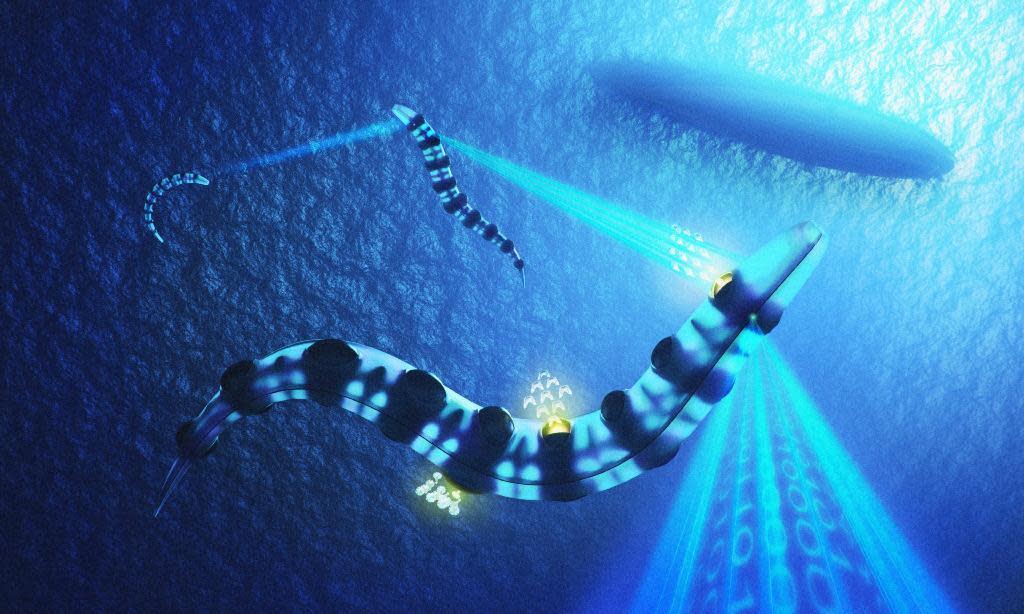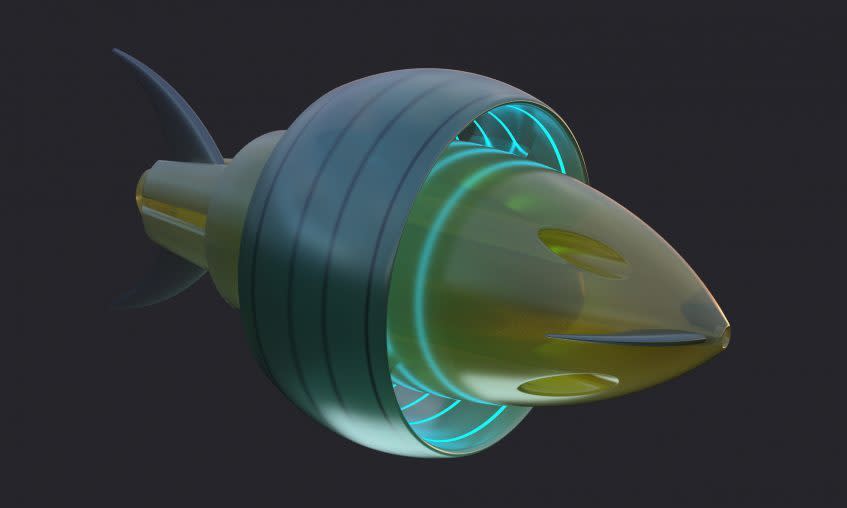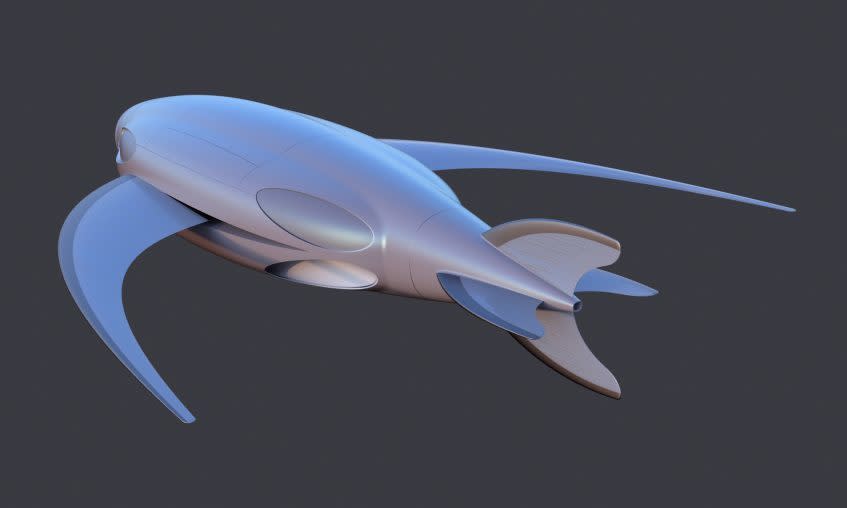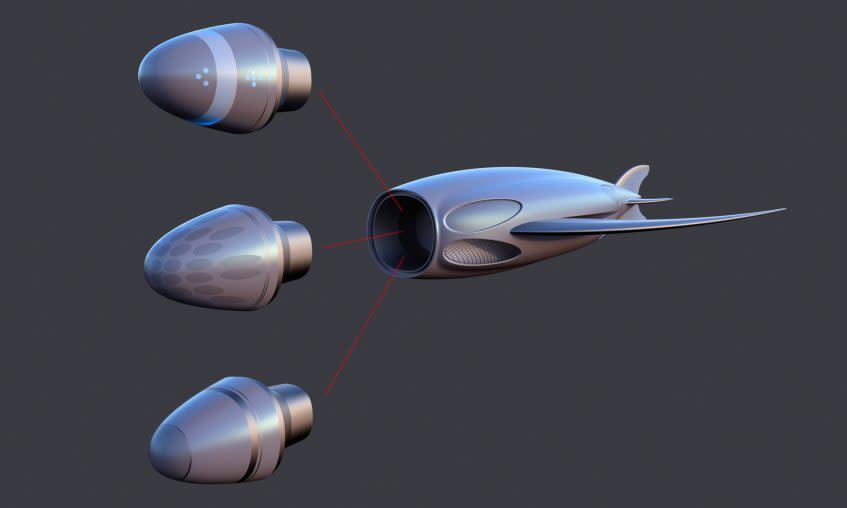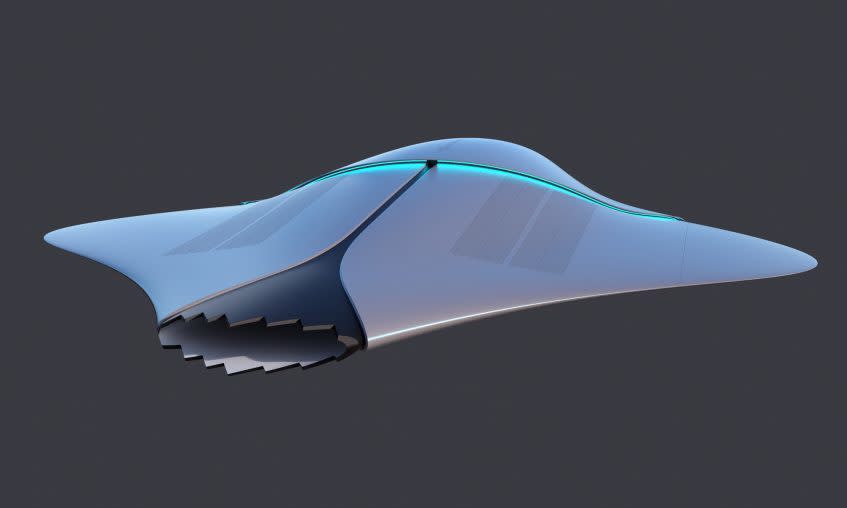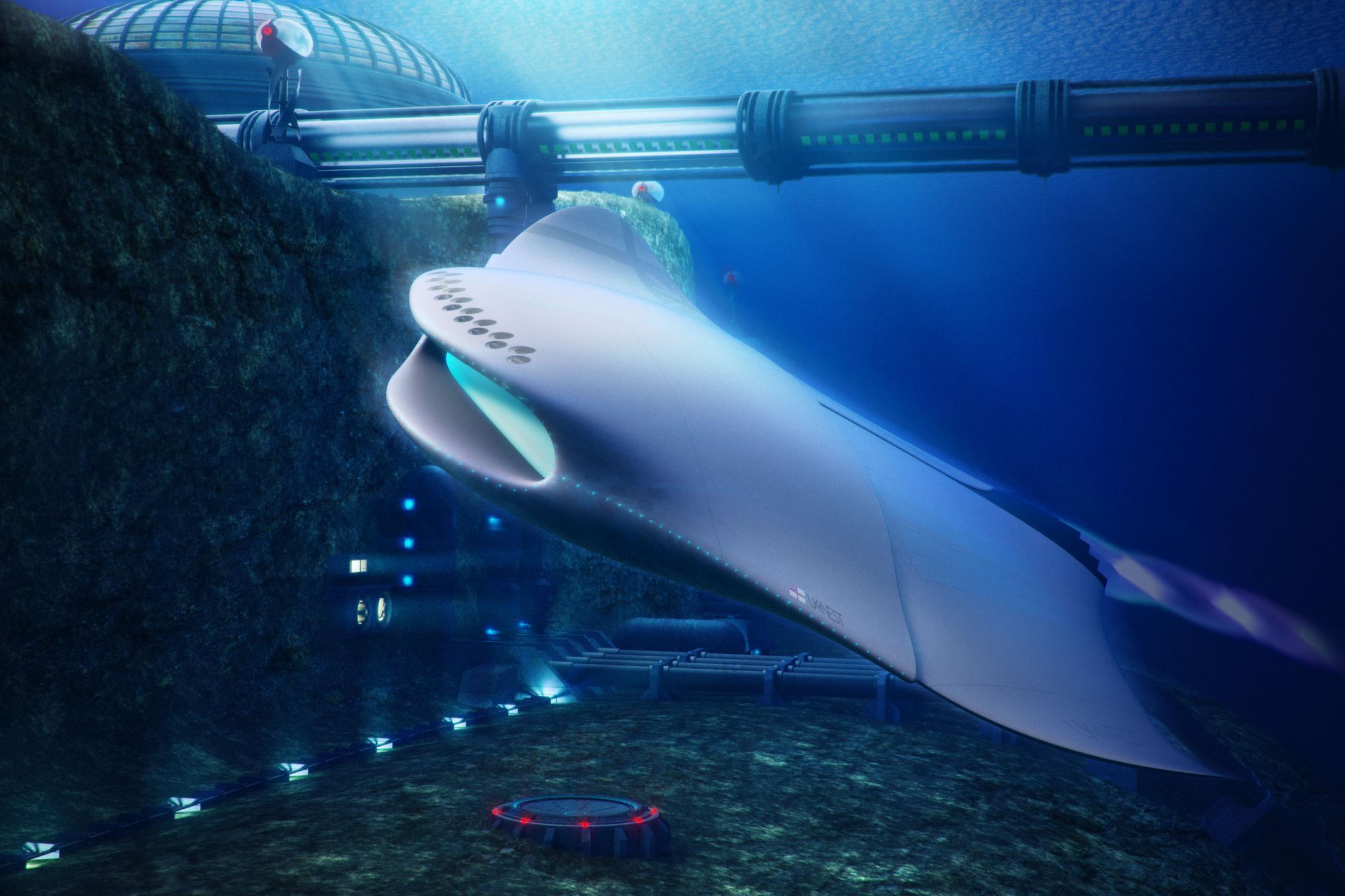Submarine technology has changed a lot in the past hundred years, and a series of new concept designs released by the UK’s Royal Navy offers a look at how much more submarines could evolve in the future. Inspired by underwater creatures like whales, eels, and manta rays, the early mock-ups are focused around a mothership dubbed the Nautilus 1000. The whole project was created to mark the 100th anniversary of the launch of the USS Nautilus, the world’s first nuclear-powered submarine.
The new Nautilus, as envisioned by young designers and engineers from technology nonprofit UKNEST, looks like a cross between a manta ray and a whale. Like an actual fish, flexible wingtips facilitate the vessel’s steering. A selection of drones accompany the mothership for defence and attack purposes. Just like the Nautilus, they take inspiration from nature.
The Eel, an Unmanned Underwater Vehicle, is an autonomous drone launched from the weapons bay of the Nautilus. Its organic design not only makes for efficient underwater movement, but also helps it camouflage into the surrounding environment. Flying Fish swarm drones, complete with fins, replace traditional missiles and torpedoes. “They would operate in the two most challenging regions for sensors to detect threats—the highly unpredictable sea surface and noisy layer under the sea surface,” UKNEST explains.
“It is no longer sufficient for Britannia to rule the waves,” UKNEST chair Tony Graham says. “Tomorrow the Royal Navy must aspire to dominate the deepest oceans.” Commander Peter Pipkin, fleet robotics officer, concurs. “The underwater battle space is a hugely challenging environment and it’s predicted to remain so for a long time yet.”
